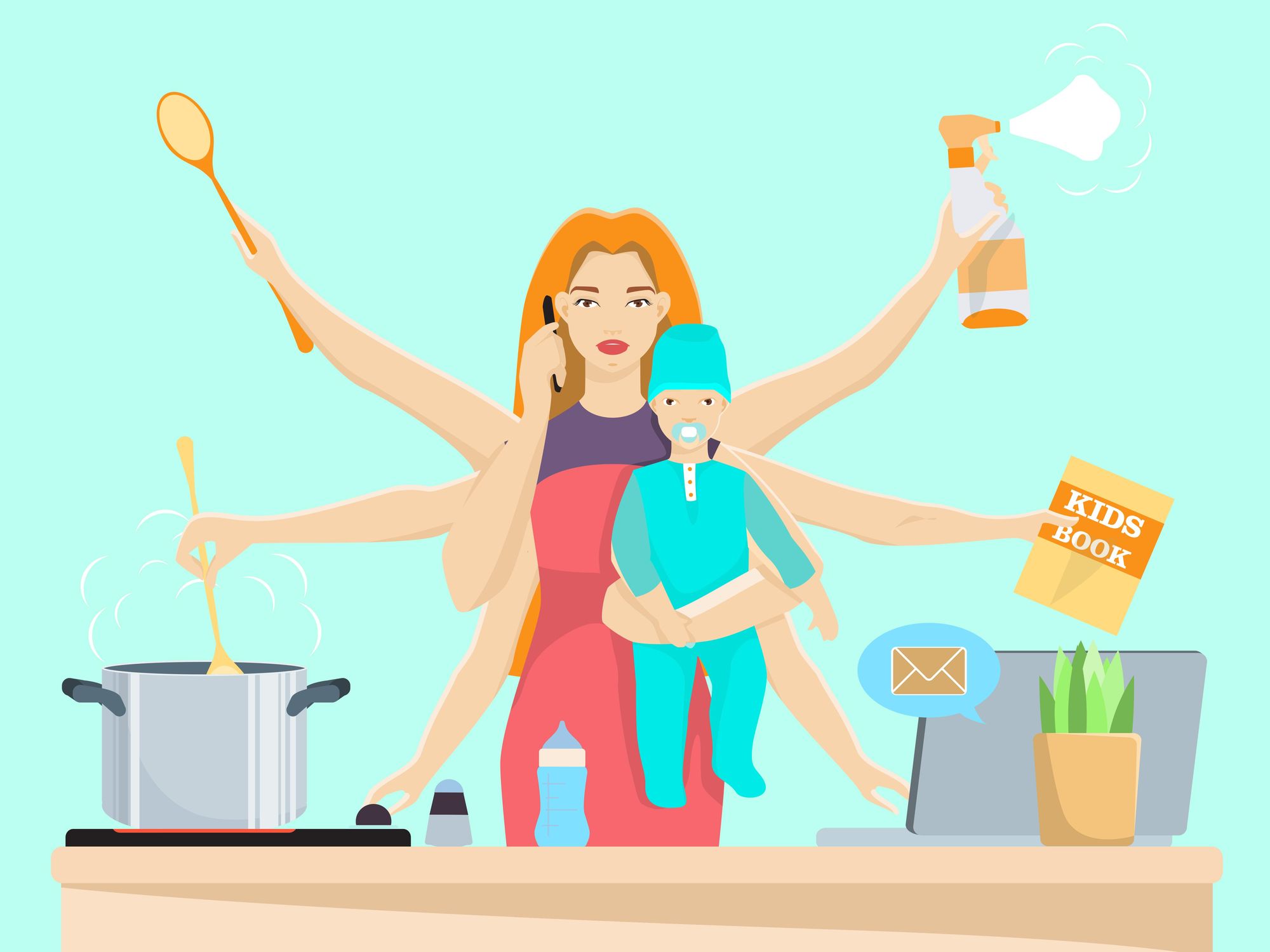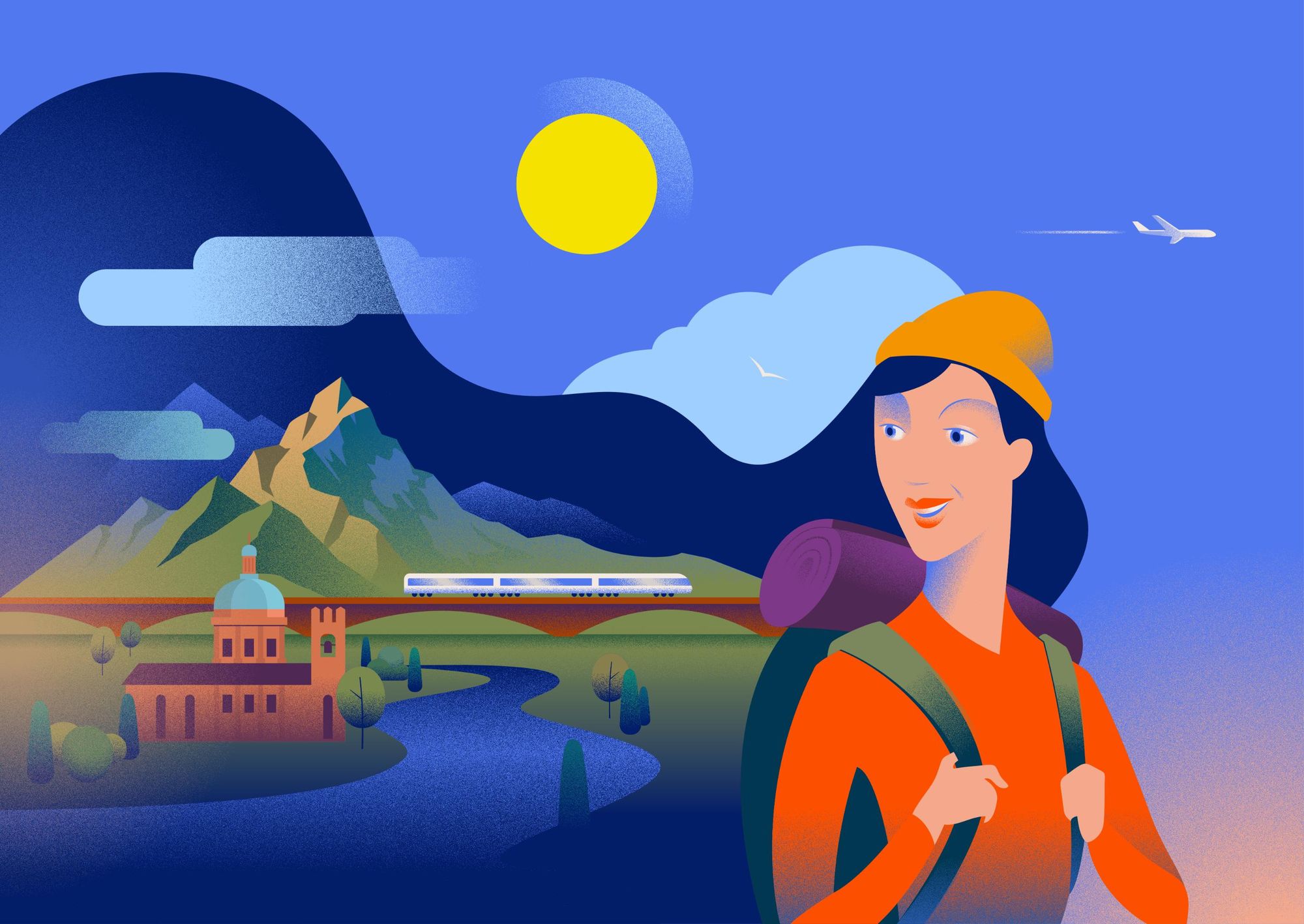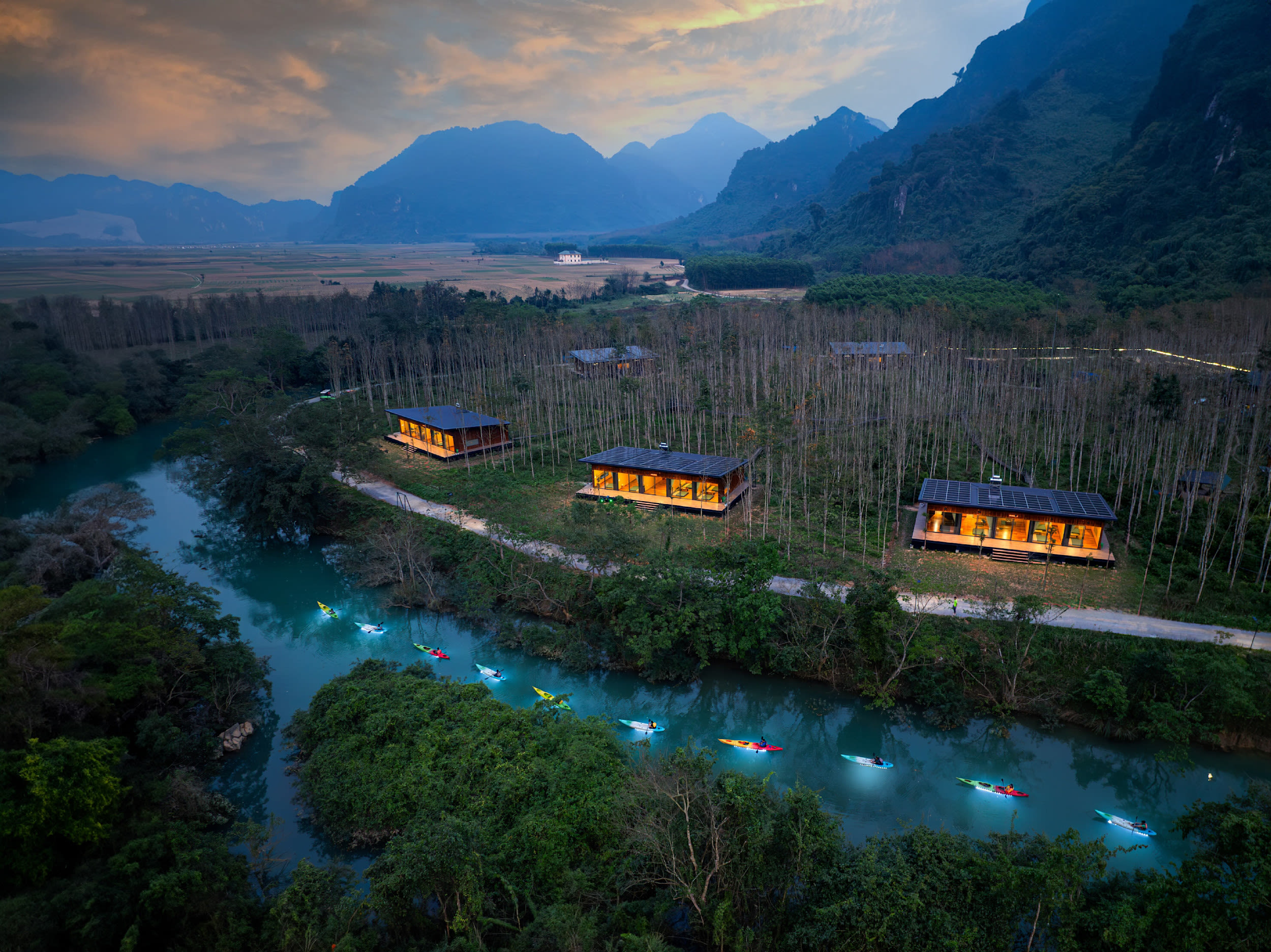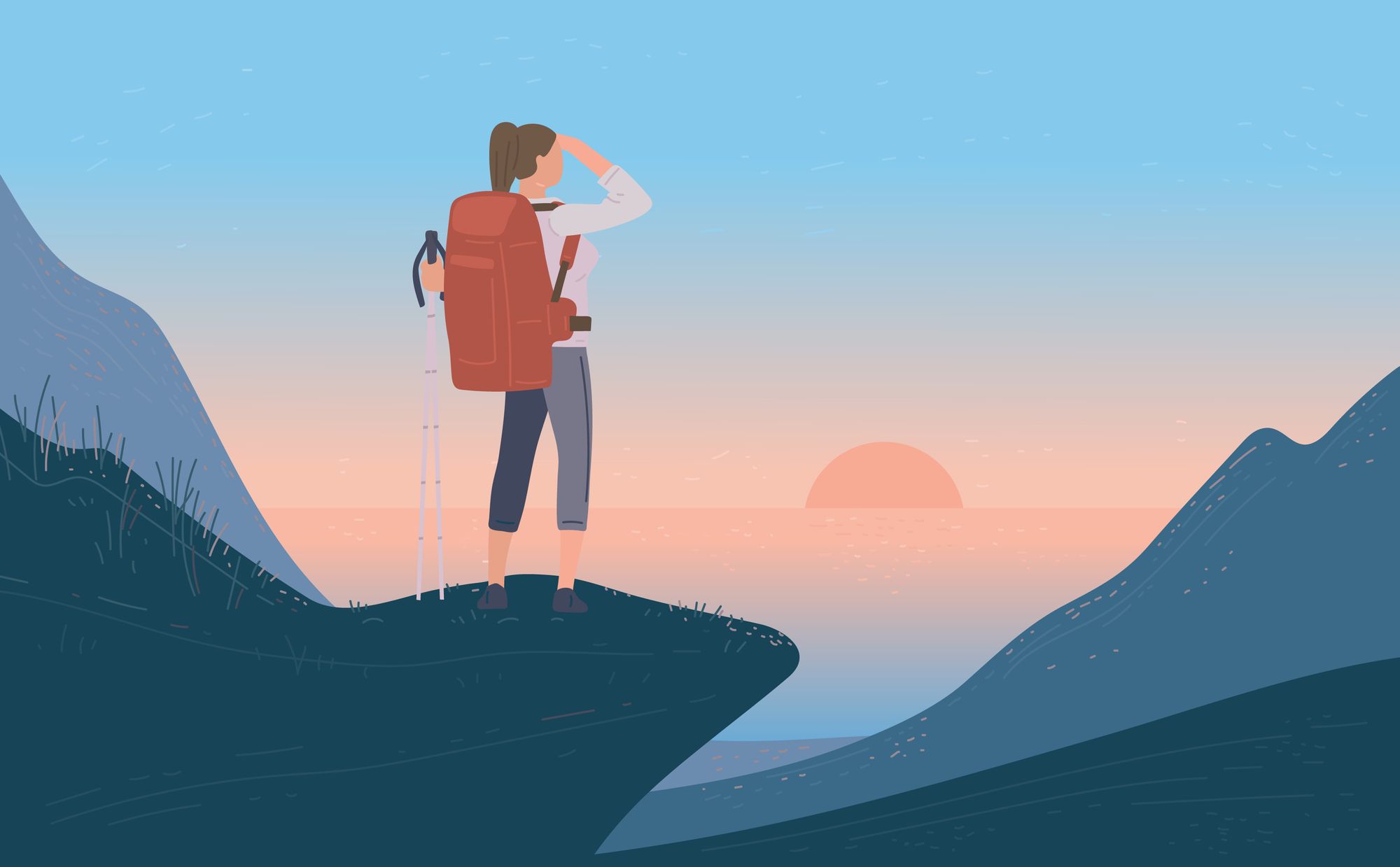Last year, research organisation Skift published a report on female travellers. One of their most striking findings was that women make 82% of all travel decisions, from choosing the destination to comparing flight times and clicking “book”. In other words, women are the de facto chief travel officers of many households, and an important economic force within the industry.
Depending on how you look at it, that 82% figure can read like yet another example of women quietly doing the emotional and logistical labour that keeps families running. Or it’s indicative of something more hopeful: more women than ever deciding where to go, how to travel and, increasingly, choosing to travel alone.
We dug into the data and spoke to women of different ages, relationship statuses and travel styles — from mums booking family breaks to solo hikers in their 50s — to find out more.
The Mental Load

Heterosexual relationships have become more equitable over the years. It’s common for both partners to be in paid employment and to split household chores. However, an increasing body of research suggests that although men are helping out at home, it’s women who tend to take on the greater share of the ‘mental load’— the invisible cognitive and emotional labour that enables the household to run smoothly.
Some examples of cognitive labour include organising playdates and hospital appointments for children, making a meal plan for the week, or even telling a willing partner what cleaning chores need to be done. Examples of emotional labour include remembering special occasions like anniversaries, handling social obligations and comforting upset children.
Booking a trip as a couple, or a family, involves both cognitive and emotional labour. Not only are you making decisions around where to go and the sorts of activities you want to do, you also need to make sure everyone’s happy with the dates and destination you’ve chosen — which can involve a degree of compromise. If you’re travelling without your partner or children, there might also be a negotiation involved over the length of travel, or how frequently you’ll communicate.
I guess I still take a lot of the mental load — and he does the exciting bit! But it works for us
In my memories of travelling as a child, it was always my mum who packed the suitcases (for my siblings, herself and my dad), who kept hold of the passports and organised our flights and activities. My dad’s lack of participation was a constant source of frustration — and I’ve heard my female friends express similar sentiments thirty years later.
However, not everyone finds booking a holiday a chore. For many, it can be an enjoyable process rather than a ‘mental load’, leading to anticipatory excitement of the trip itself. Kirsty Holmes, who has a partner and is childfree, does the majority of the travel planning: a situation she’s happy with.
“I feel empowered both with the travelling itself, and deciding where to go and what to do. I enjoy the planning phase as much as the trip,” she says. “I’ll go solo on group trips, arrange short breaks with friends and longer trips with my husband. It’s definitely me that takes the lead on that. Reasons for this probably include a stronger desire to travel than him, more exposure and experience of travel planning due to my job, and being a bit of a control freak.”
For Abi Tinawi, married with two children, travel planning is more of a collaborative process.
“Whilst I'd say I'm 'CEO of the household' in almost everything else, trips are an exception for us,” she says. “My husband is a mega travel and adventure junkie and will plan the majority of our trips. He's the ideas man, and will also do the bookings of flights, accommodation and excursions. I will usually execute the details: what to pack; what to eat and what time we need to be where. So I guess I still take a lot of the mental load — and he does the exciting bit! But it works for us.”
Flying Solo

A statistic can tell more than one story. In fact, it can express two contradictory perspectives simultaneously. If the first half of this article looked at women taking on travel decisions as an extension of the mental load, the second shows a different picture: women claiming those decisions as a form of freedom.
More women are travelling than ever before, to the extent that they outnumber men. Here at Much Better Adventures, 58% of our travellers in 2025 were female — which means that, in most of our groups, it’s women who are deciding who to travel with, and where.
The statistic that 82% of travel decisions are made by women is clearly reflected in one real-word trend: the growing popularity of solo female travel. According to a report from Virtuoso, 71% of solo travellers are women. When women travel solo, they’re not just buying a ticket, they’re making 100% of the decisions that go with that trip — the destination, the budget, safety strategy and what tour operator to book with.
It's given me the confidence to plan trips around what is most important to me and make my own decisions
One reason that women travel more frequently is that they have an increasing amount of disposable income, enabling them to travel when they might not previously have been able to afford it. More women are childfree and single than ever before (it’s forecasted that by 2030, 45% of women in the US between 25 and 44 will be single). Without the commitment of a partner or family, many single women have both more freedom and greater economic independence, meaning they are more able to travel.
However, there has also been a cultural paradigm shift which emphasises the importance of travel for improving your wellbeing, expanding your horizons and increasing your resilience and independence.
In Eat, Pray, Love, a bestselling memoir by Elizabeth Gilbert (and a film released in 2010), the female protagonist uses travel to heal after a messy divorce; spending a year in Italy, India and Bali. What resonated so strongly with audiences was the idea of a woman rewriting her life story by deciding, on her own terms, where to go and how long to stay — important financial, logistical and emotional decisions that earlier generations of women might never have felt allowed to make.

In 2012, Cheryl Strayed released the seminal memoir Wild: From Lost to Found on the Pacific Crest Trail (which was also made into a film). It tells the story of her hike along the Pacific Crest Trail following the death of her mother, a divorce and her subsequent self-destructive drug use. Strayed’s hike is a story of a woman repeatedly backing her own decisions — to go, to continue, to trust herself in the face of fear. It’s a radical rewriting of the cultural script that says women should defer to others when it comes to risk, money and time away from home.

For Katarina Bickley, solo travel has helped her learn to trust in her decision-making as destination, and understanding where her priorities lie.
“Through travelling solo, I've learned a lot about myself and my travel style. It's given me the confidence to plan trips around what is most important to me and make my own decisions. My favourite types of trip to do solo are anywhere I can don my backpack and navigate the food, nature and culture of somewhere warm,” she says.
‘I’m currently single, but I think it's super important to try travelling solo even when you're in a relationship. It helps make us more confident and self-assured as individuals, which in turn makes the relationship stronger.”
Making travel decisions for Katarina, then, isn’t just indicative of the ‘mental load’. It’s a form of empowerment that extends beyond travelling, enabling her to become more confident and independent.
It might feel selfish, but it's not selfish. It's just about making that decision to acknowledge how important adventure is to you
This renewed freedom and confidence isn’t just the province of the young, free and single. In fact, there’s been a surge in solo female travellers over 50. Skift’s report supports this, showing that women aged 65+ are the most likely age group to travel solo (25%), followed by women between 55-65 (24%).
Jo Moseley, a single working mum of two teenagers, didn’t start solo adventuring until her 50s. Her mindset has shifted from doing little for herself, to fitting adventure around everyone else’s needs, before finally deciding to prioritise her adventures.
“My 30s and 40s was about keeping my head down, juggling work with the school run,” she says. “It’s always been busy. But it’s about seizing that moment and saying ‘I'm just going to do it and everything else is just going to have to drop right now.’ It might feel selfish, but it's not selfish. It's just about making that decision to acknowledge how important adventure is to you.”

The travel industry is changing to cater to solo women travellers and their needs. Safety is one of the key considerations when planning a trip, especially when travelling alone. There’s been a rise in women-only group trips, all-female taxis and women-only hotels or dormitory accommodation — all of which can help women feel at ease.
Meanwhile, bloggers such as Absolutely Lucy facilitate decision-making by providing women with resources and inspiration to travel solo, as do tools such as the Solo Female Traveler Index, which highlights the safety of a specific destination.

Put simply, the rise in solo female travel doesn’t just mean more women on the road. It means more women are researching destinations, weighing up risks, allocating budgets and backing their own choices. When they travel with partners, friends or family, it’s little surprise that they’re the ones who naturally step into the role of chief decision-maker. The 82% statistic, then, isn’t just about household mental load — it’s also the result of millions of women who’ve already learned, on solo journeys, that they can trust themselves to decide where to go next.
Inspired? Join us on one of our friendly, inclusive small-group adventures across the world, and take the hassle out of planning.



